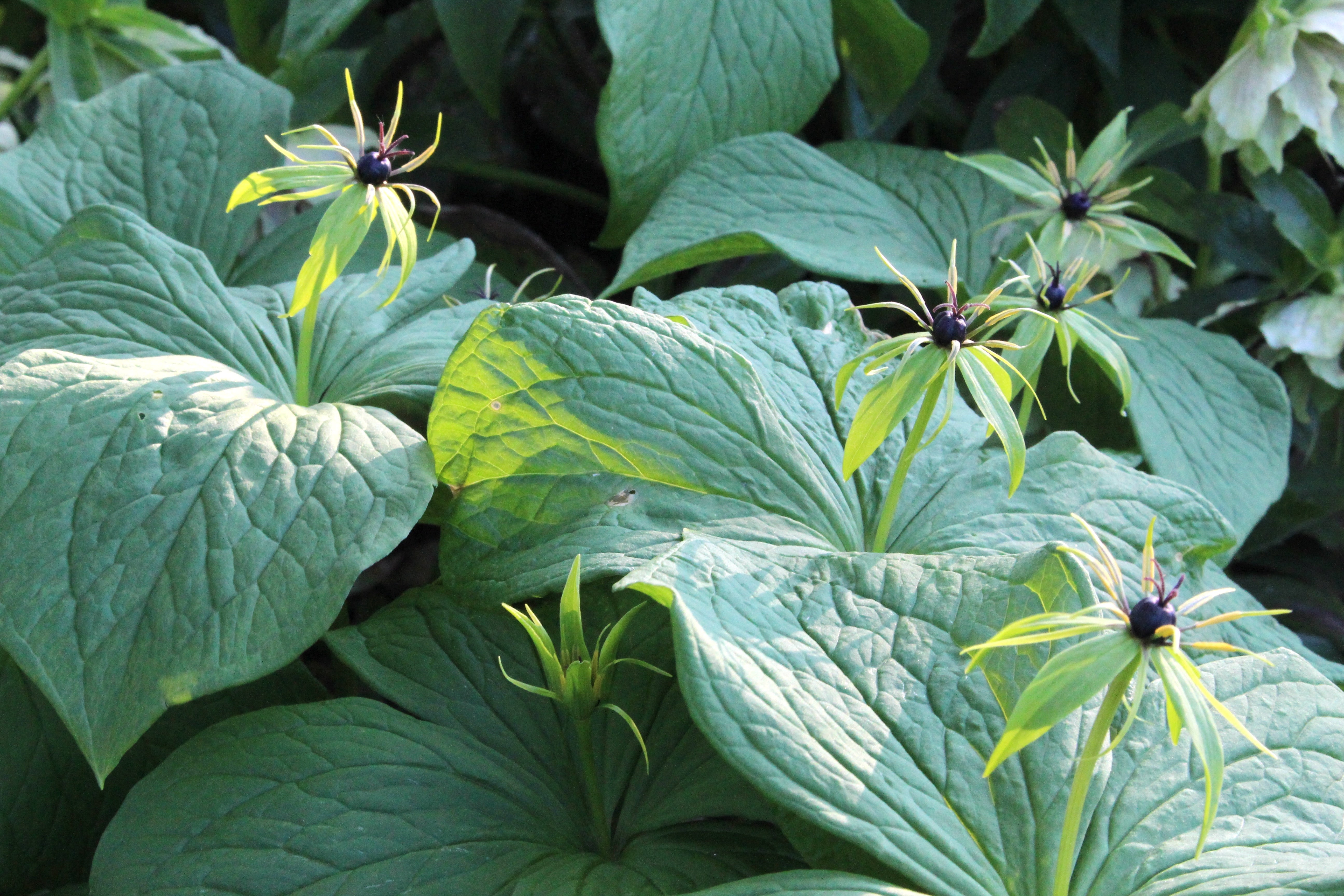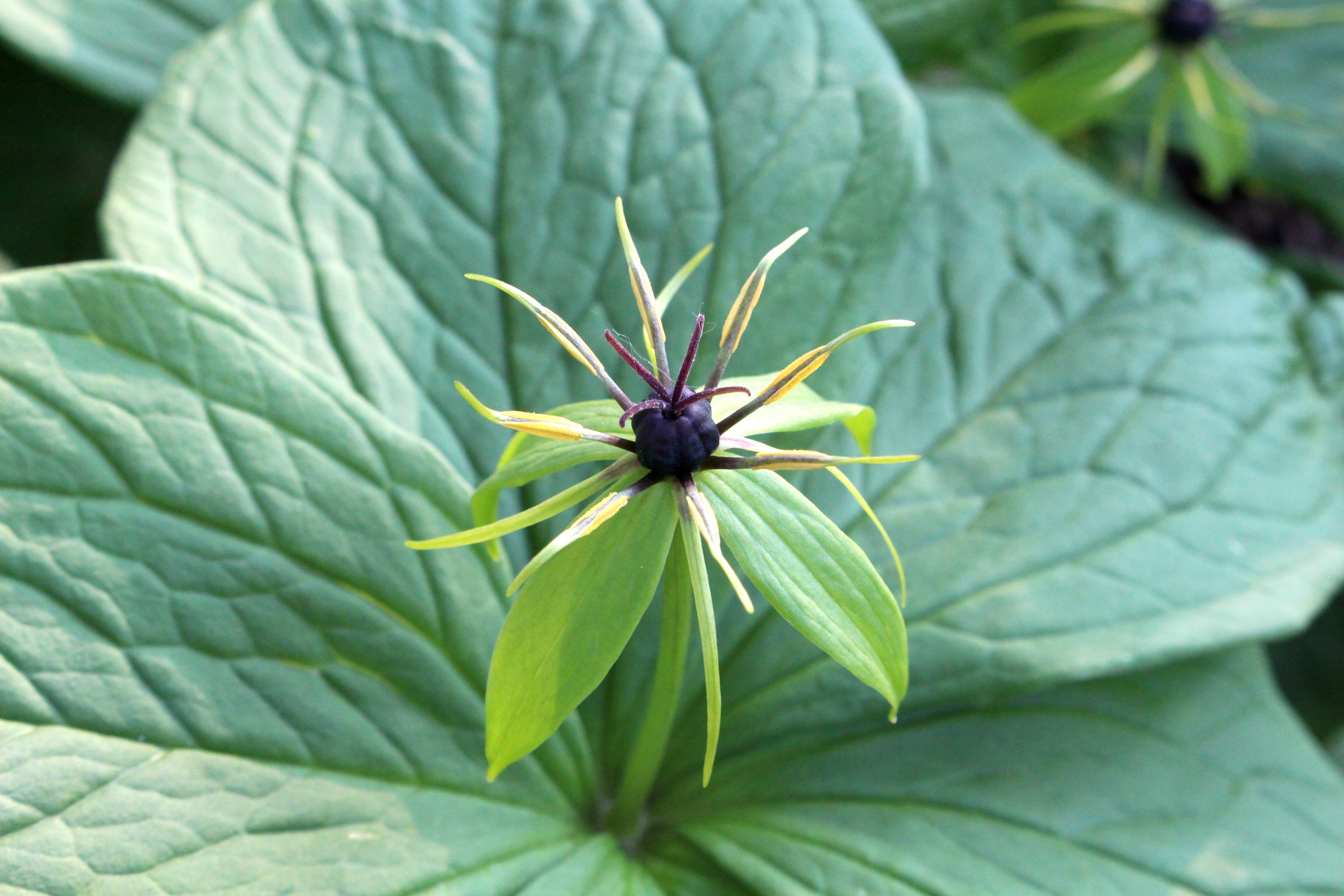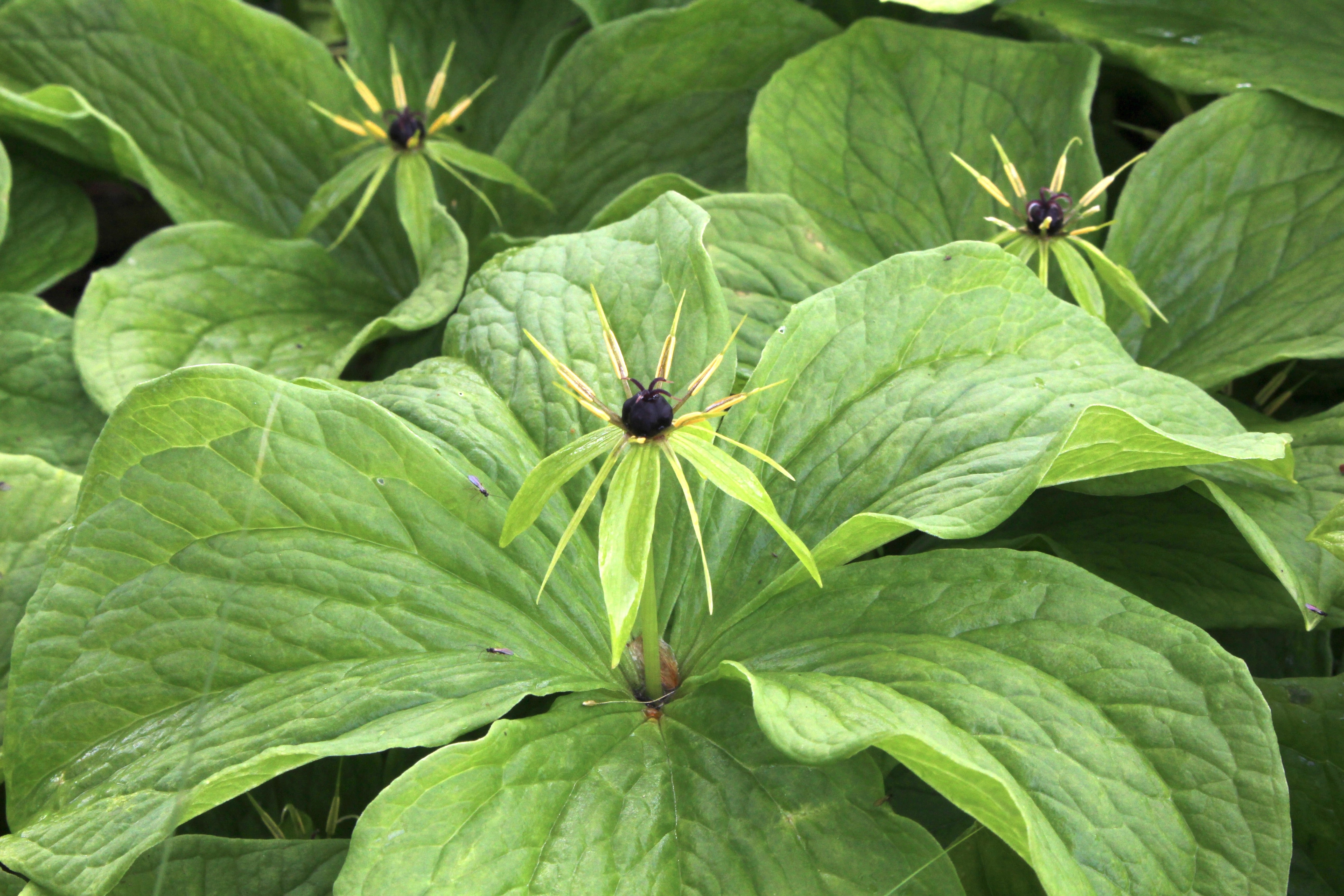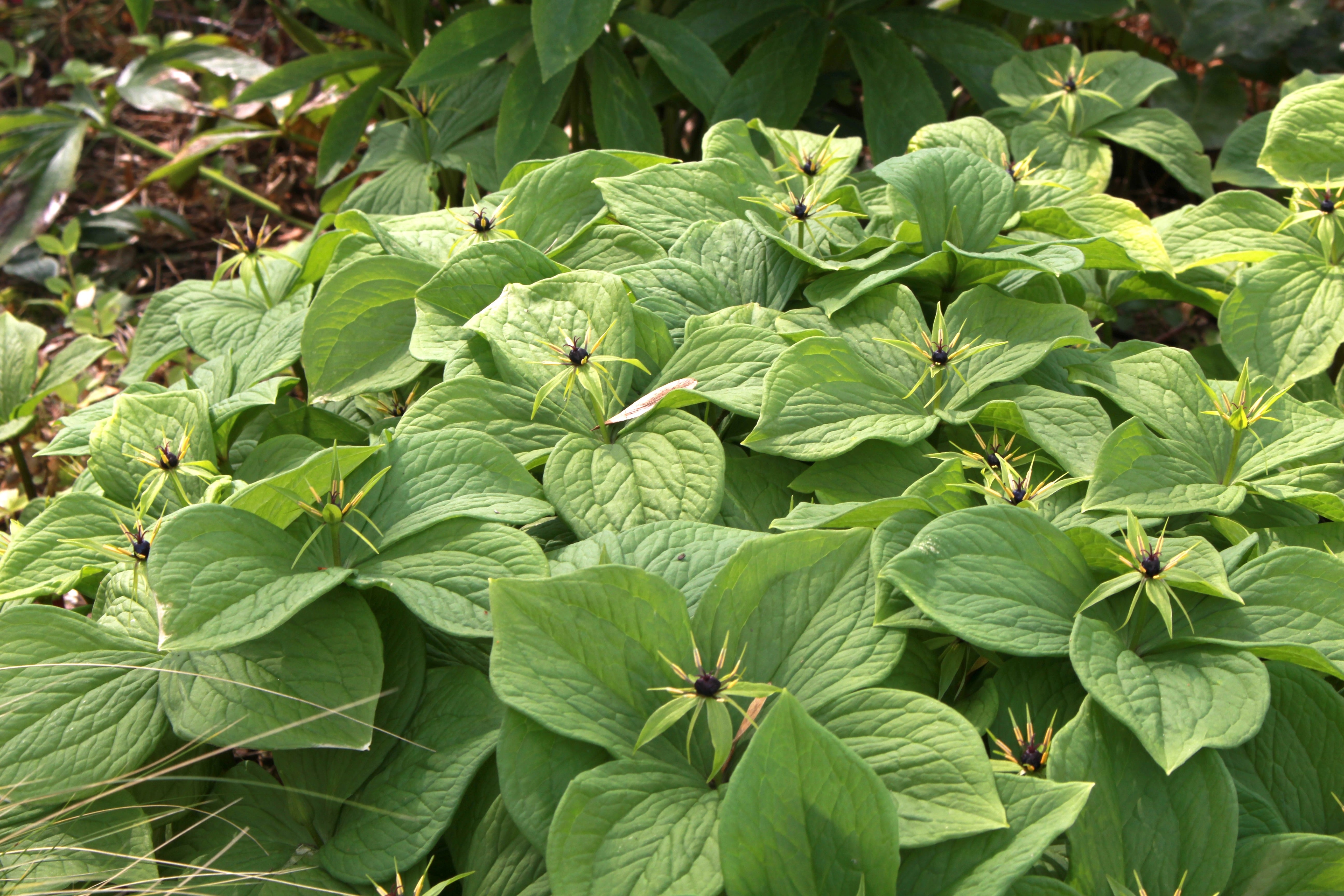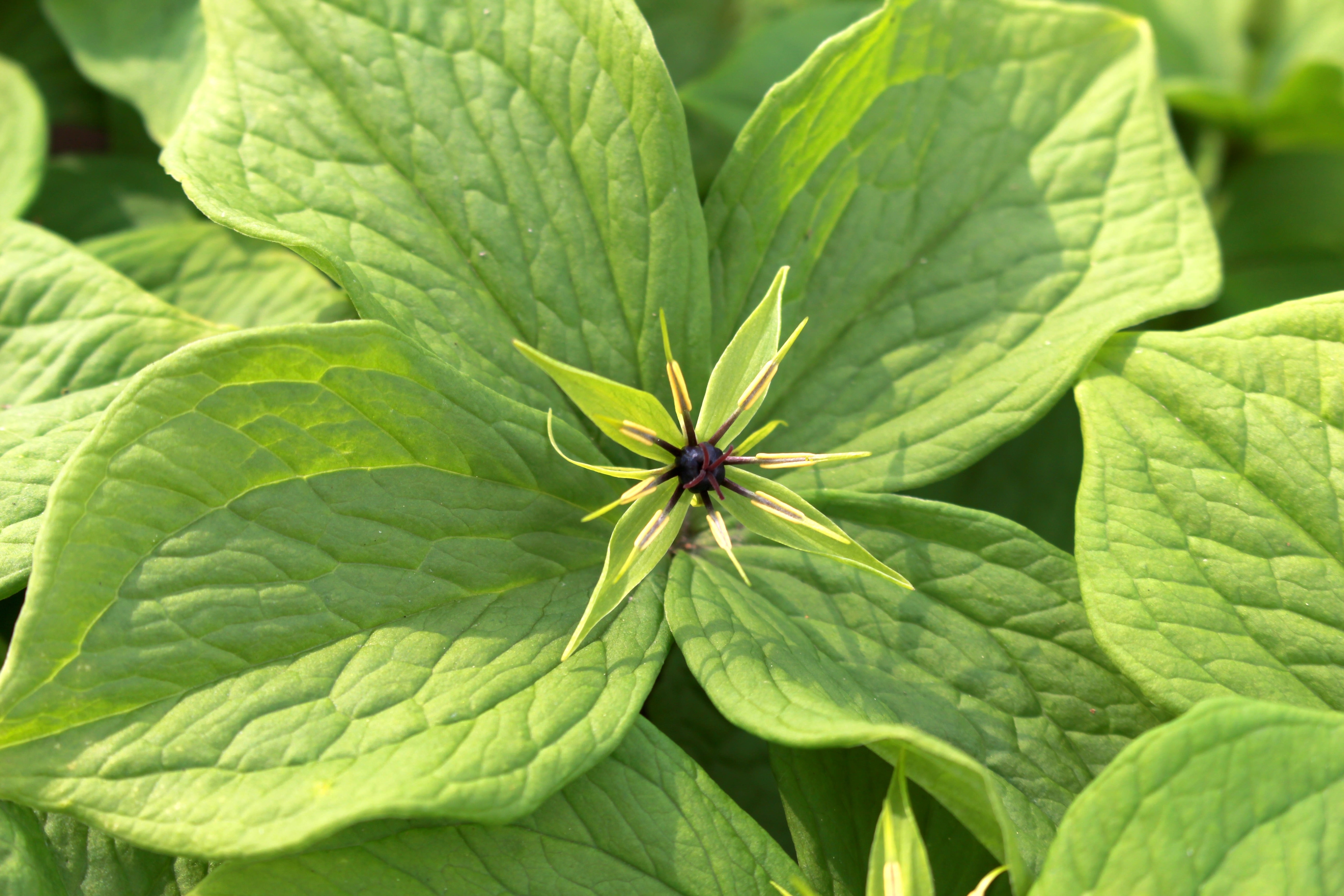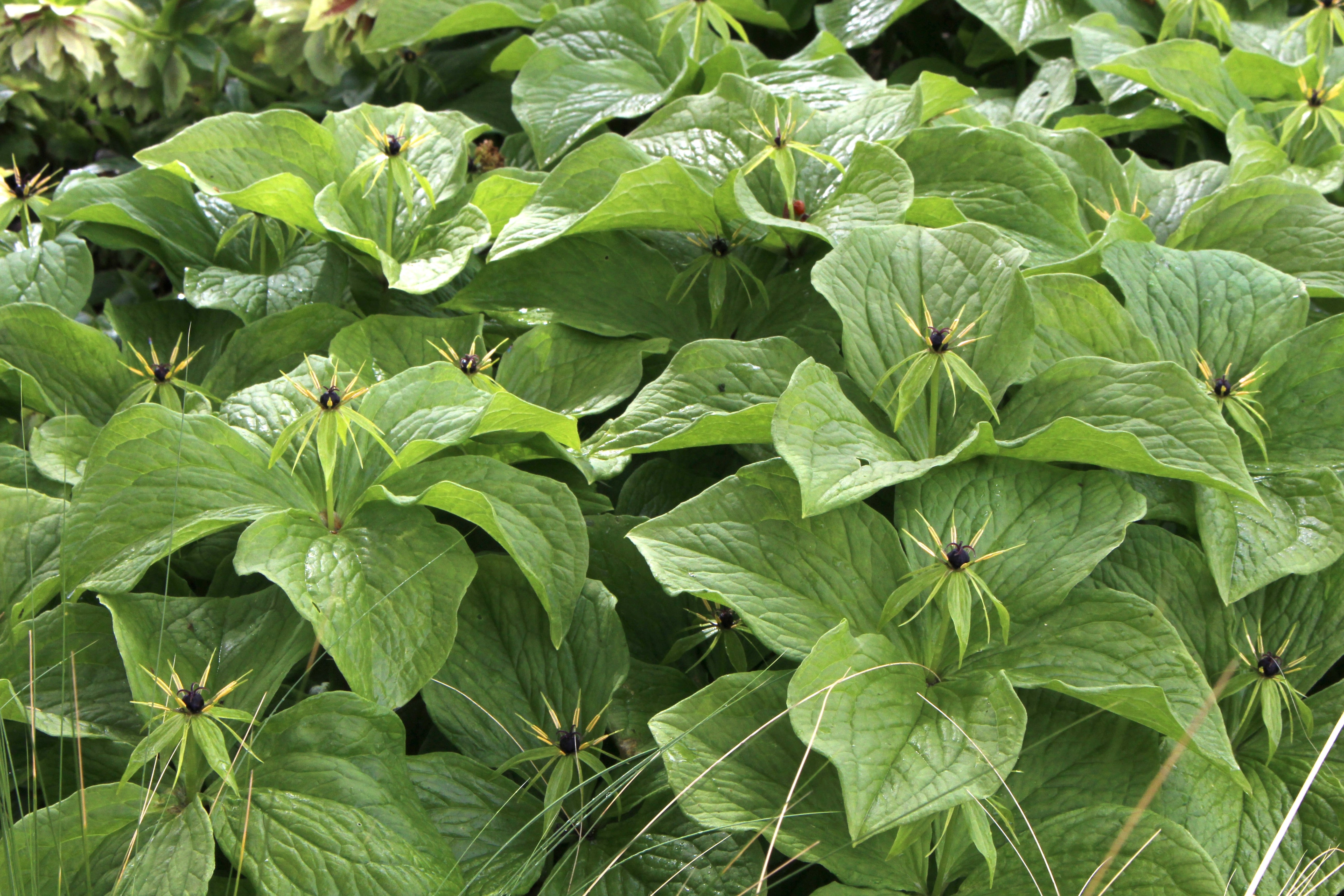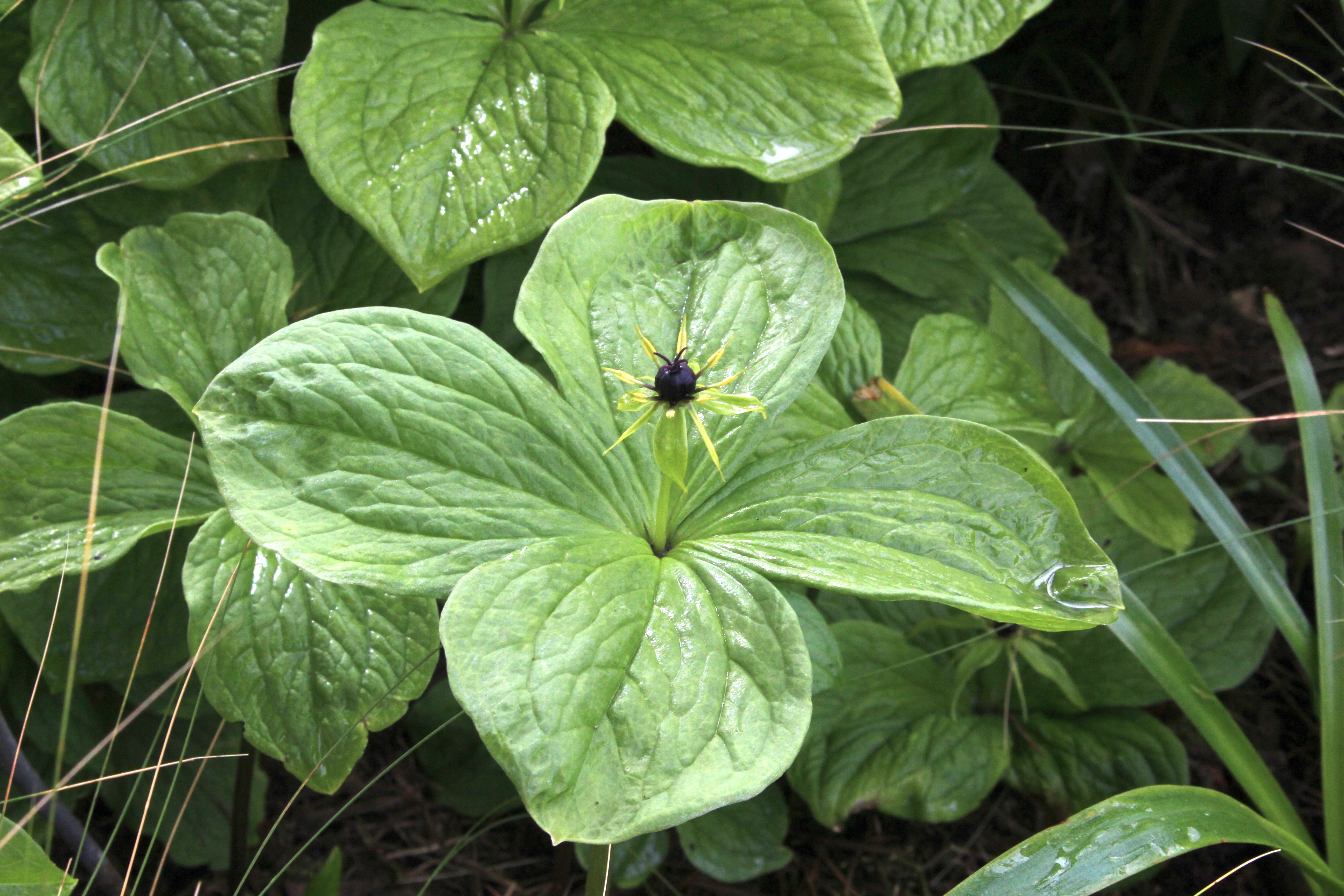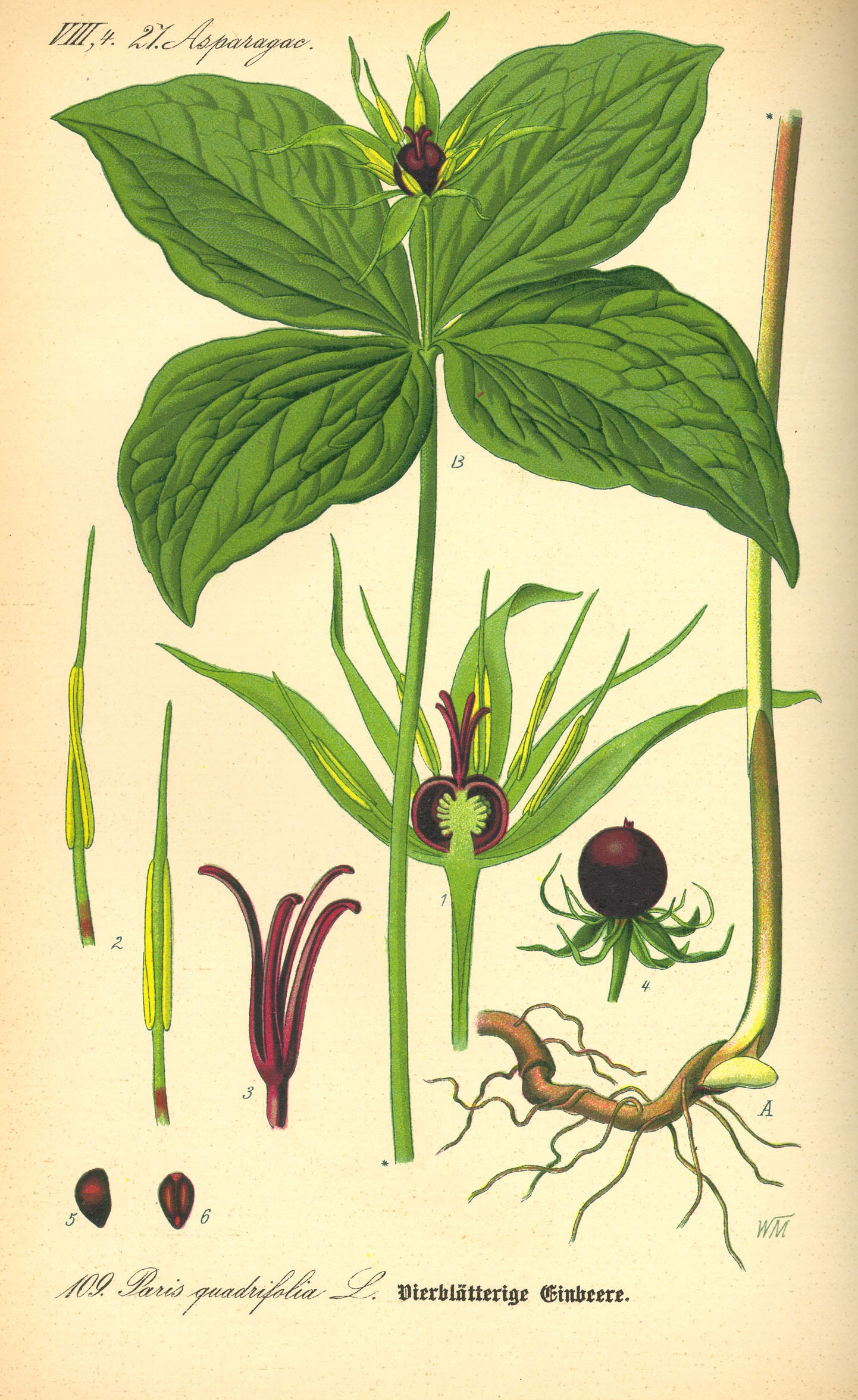Paris quadrifolia
Approx. 0.5 litre pot
About this cultivar:
Paris quadrifolia occurs locally in temperate and cool areas throughout Europe and northern Asia from Spain to Yakutia and northern China, but is absent in the wild from the Americas, Africa and the southern hemisphere. In Britain it is more frequently found in the east of the country. Commonly know as the herb-paris or true lover's knot the flower is borne above a single whorl of four or more stem leaves (hence the species name quadrifolia). The common name ‘herb paris’ was first used in 1544 by Italian botanist Pierandrea Matthioli in his Italian edition of commentaries on Dioscorides’ Materia Medica . Herb paris also appears in Gerard’s Herbal of 1636 as an antidote to highly toxic substances such as arsenic or mercury. Other common names allude to its black berry (devil-in-a-bush) or to its connections with love – the four leaves are paired like lovers and also bear a resemblance to the loops of the true lover’s knot.
Each plant only produces one blueberry-like berry, which is poisonous, as are other tissues of the plant. Poisonings are rare, because the plant's solitary berry and its repulsive taste make it difficult to mistake it for a blueberry!
Great for naturalising a woodland area but we grow it in a sunny location – we like it unusual flower to be visible!
- Position: Full sun, partial shade, full shade
- Soil: Almost any soil, grows well in Ballyrobert
- Flowers: May, June
- Other features: Dappled Shade or Full Shade Loving, Grows well in Ballyrobert, Dappled Shade or Full Shade Loving
- Hardiness: Fully hardy, grows well in Ballyrobert, H5 - Hardy in most places throughout the UK even in severe winters (-15 to -10°C)
- Habit: Clump forming
- Foliage: Deciduous
- Height: 15 - 45 cm (0.5 - 1.5 ft)
- Spread: 15 - 45 cm (0.5 - 1.5 ft)
- Time to full growth: 2 to 5 years
- Plant type: Herbaceous Perennial
- Colour: Green, white
- Goes well with: --
About this genus:
Paris is a genus of flowering plants described by Linnaeus in 1753. It is widespread across Europe and Asia, with a centre of diversity in China.
It consists of less than two dozen herbaceous plants: the best known species is Paris quadrifolia. Some Paris species are used in traditional Chinese medicine for their analgesic and anticoagulant properties. Intense ethnopharmaceutical interest has significantly reduced their numbers in the wild!
These plants are closely related to Trillium, with the distinction traditionally being that Trillium contains species which have trimerous (three-petaled) flowers, and Paris contains species which have 4- to 11-merous flowers.
So when growing you want to think like a Trillium – technically a woodland plant it prefers part-shade and not-to-wet soil, but in the UK will be fine in full sun!

